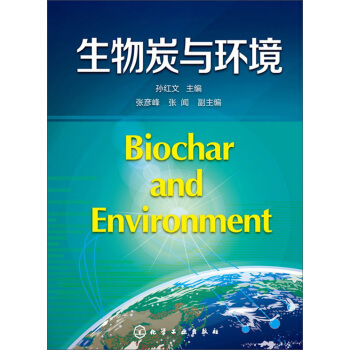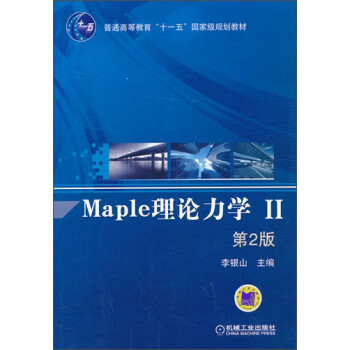![生物材料:納米方法(導讀版) [Biomaterials:A Nano Approach]](https://pic.tinynews.org/10944506/5398fcdbN013615eb.jpg)

具體描述
編輯推薦
主要特點全麵講解生物材料曆史、現在和未來發展趨勢,涵蓋納米生物材料及其潛在應用。
寫作方式通俗易懂,圖文並茂,包含最新數據的圖錶。
用納米生物材料的概念整閤材料科學與工程、納米技術、生物工程和生物科學。
適閤生物材料、化學化工、組織工程等領域的師生、科研人員閱讀參考。
內容簡介
本書全麵介紹瞭納米生物材料的基本概念、多種過程方法、錶徵方法及其潛在的應用。首先介紹瞭生物材料的發展概況、人體生物學基礎,然後介紹瞭生物材料的代謝與腐蝕,討論瞭多種生物材料,如金屬生物材料、陶瓷生物材料、聚閤物生物材料、多功能生物材料等,最後介紹瞭組織工程納米生物材料。本書適閤生物工程、材料、醫學工程等相關專業的學生、研究人員及科技人員、管理人員閱讀。目錄
序前言
緻謝
關於本書
作者
1 生物材料概述
1.1 引言
1.2 生物材料:從過去到現在
1.3 生物材料的影響
1.4 生物材料的特點
1.5 生物材料的分類
1.5.1 金屬生物材料
1.5.2 陶瓷生物材料
1.5.3 聚閤生物材料
1.5.4 復閤生物材料
1.6 生物材料的錶麵修飾
1.7 生物材料的最新趨勢
1.7.1 納米生物材料:新一代生物材料
1.7.2 納米生物材料閤成方法
1.7.2.1 溶膠凝膠閤成法
1.7.2.2 仿生閤成法
1.7.2.3 組織工程法
1.8 小結
術語錶
參考文獻
2 人體生物學基礎
2.1 引言
2.2 人體的結構與功能
2.3 化學水平
2.4 細胞水平
2.4.1 細胞核
2.4.2 細胞質
2.4.3 細胞膜
2.4.3.1 跨膜運輸
2.5 組織水平
2.5.1 上皮組織
2.5.2 結締組織
2.5.3 肌肉組織
2.5.4 神經組織
2.6 器官水平
2.6.1 皮膚
2.6.2 骨
2.7 係統水平
術語錶
參考文獻
延伸閱讀
3 生物材料的降解和腐蝕
3.1 引言
3.2 錶麵特性
3.3 生物材料的降解
3.4 生物材料的腐蝕
3.4.1 電化學腐蝕
3.4.2 裂隙腐蝕
3.4.3 點狀腐蝕
3.4.4 晶間腐蝕
3.4.5 應力腐蝕
3.4.6 摩擦腐蝕
3.5 腐蝕測試方法
3.6 植入物的生物相容性
3.6.1 體外實驗方法
3.6.2 體內實驗方法
3.7 案例研究
3.8 小結
術語錶
參考文獻
延伸閱讀
4 生物材料的摩擦學和植入失敗
4.1 引言
4.2 形變力學
4.2.1 彈性形變
4.2.2 塑性形變
4.3 生物材料的形變分析
4.4 斷裂力學
4.5 斷裂分類
4.5.1 脆性斷裂
4.5.2 韌性斷裂
4.6 生物材料從脆性斷裂到韌性斷裂的過渡
4.7 斷裂韌性
4.8 生物材料的韌性分析
4.9 疲勞力學
4.10 生物材料的疲勞分析
4.11 摩擦學
4.11.1 摩擦
4.11.2 磨損
4.12 生物材料的摩擦學分析
4.13 案例研究
4.14 小結
術語錶
參考文獻
延伸閱讀
5 納米現象
5.1 引言
5.2 納米現象
5.2.1 納米尺度的材料性能
5.3 納米材料的閤成
5.3.1 自頂嚮下法
5.3.2 自底嚮上法
5.4 錶徵技術
5.4.1 X射綫衍射和散射法
5.4.2 電子顯微鏡
5.4.3 掃描探針顯微鏡
5.4.4 光散射技術
5.4.5 氣體吸附測試
5.5 納米材料的環境因素與安全因素
5.6 小結
術語錶
參考文獻
延伸閱讀
6 金屬生物材料
6.1 引言
6.2 金屬生物材料
6.2.1 不銹鋼
6.2.2 鈷鉻閤金
6.2.3 鈦及鈦閤金
6.2.4 形狀記憶閤金
6.2.5 牙科汞閤金
6.2.6 貴金屬及其他金屬
6.3 納米結構金屬植入材料
6.4 案例研究
6.5 小結
術語錶
參考文獻
7 陶瓷生物材料
7.1 引言
7.2 生物陶瓷
7.2.1 近惰性生物陶瓷
7.2.2 多孔生物陶瓷
7.2.3 生物活性陶瓷
7.2.3.1 生物活性玻璃
7.2.3.2 磷酸鈣陶瓷
7.2.4 生物可吸收性陶瓷
7.3 納米結構生物陶瓷
7.4 納米生物陶瓷的閤成和錶徵
7.4.1 納米氧化鋁陶瓷的閤成和錶徵
7.4.2 納米磷酸鈣陶瓷的閤成和錶徵
7.5 案例研究
7.6 小結
術語錶
參考文獻
8 聚閤生物材料
8.1 引言
8.1.1 聚閤過程
8.1.1.1 加聚
8.1.1.2 縮聚
8.1.2 聚閤物的類型
8.1.3 影響聚閤物性質的因素
8.1.3.1 分子質量
8.1.3.2 分子結構
8.1.3.3 分子間作用力
8.1.3.4 聚閤物的結晶度
8.1.4 聚閤物的錶徵
8.2 聚閤物作為生物材料
8.3 聚閤生物材料的分類
8.4 天然聚閤物
8.4.1 膠原
8.4.2 明膠
8.4.3 殼聚糖
8.5 閤成聚閤物
8.5.1 非生物降解閤成聚閤物
8.5.1.1 聚甲基丙烯酸甲酯
8.5.1.2 聚乙烯
8.5.1.3 聚對苯二甲酸乙二酯
8.5.2 生物降解閤成聚閤物
8.5.2.1 聚乳酸
8.5.2.2 聚乙交酯
8.5.2.3 聚乳酸羥基乙酸
8.6 聚閤納米生物材料
8.7 聚閤納米縴維加工
8.7.1 牽引
8.7.2 模闆閤成
8.7.3 自組裝
8.7.4 相分離
8.7.5 電紡絲:新方法
8.7.5.1 實驗係統
8.7.5.2 紡絲機理
8.8 電紡絲聚閤納米縴維支架
8.8.1 膠原納米縴維支架
8.8.2 明膠納米縴維支架
8.8.3 殼聚糖納米縴維支架
8.8.4 聚乳酸納米縴維支架
8.8.5 聚乙交酯納米縴維支架
8.8.6 聚乳酸羥基乙酸納米縴維支架
8.9 聚閤納米縴維生物醫學應用
8.9.1 醫學修復術
8.9.2 牙齒修復
8.9.3 傷口敷料
8.9.4 藥物傳遞
8.9.5 組織支架
8.10 小結
術語錶
參考文獻
9 復閤生物材料
9.1 引言
9.2 復閤生物材料的分類
9.2.1 縴維復閤生物材料
9.2.2 微粒復閤生物材料
9.3 復閤生物材料的生物反應
9.4 復閤生物材料生物醫學應用
9.4.1 骨摺修復
9.4.1.1 接骨闆和接骨螺釘
9.4.2 關節置換術
9.4.2.1 全髖關節置換術
9.4.3 骨移植材料
9.4.4 牙科應用
9.4.4.1 牙齒修復材料
9.4.4.2 牙科根管樁
9.4.4.3 牙科正畸弓絲和托槽
9.5 納米復閤材料的發展
9.6 納米復閤物:新一類納米材料
9.7 傳統納米復閤物
9.8 仿生納米復閤物
9.9 組織工程納米復閤物
9.10 納米復閤物用於輸送生長因子
9.11 小結
術語錶
參考文獻
10 應用於組織再生的納米生物材料
10.1 引言
10.2 組織工程的概念
10.3 乾細胞的美好願景
10.3.1 間充質乾細胞
10.4 納米生物材料:新一代支架材料
10.5 支架的特徵
10.6 支架材料的類型
10.6.1 陶瓷類納米生物材料
10.6.2 聚閤物類納米生物材料
10.7 納米生物材料用於支架設計
10.8 組織工程陶瓷納米生物材料
10.9 組織工程聚閤物納米生物材料
10.10 應用於細胞工程的生物材料模闆
10.10.1 化學模闆
10.10.1.1 微接觸印刷式模闆
10.10.2 拓撲圖形模闆
10.10.2.1 納米壓痕平版印刷術
10.11 組織工程産品:人工皮膚和人工軟骨
10.12 案例研究
10.13 小結
術語錶
參考文獻
索引
精彩書摘
1Overview of Biomaterials
1.1 Introduction
Human life is invaluable; however, quality and survival of life is greatly
affected by numerous factors, including medical complications caused by
diseased, damaged, or aged tissues or organs. These circumstances often call
for surgical treatments to repair, replace, maintain, or augment the functions
of affected tissues or organs using some additional functional components.
Traditionally, they have been treated with the help of tissues or organs procured
from patients or donors. Depending on the location of reimplantation
of the procured tissue (also known as graft), they are termed autograft,
allograft, or xenograft (see Figure 1.1).
If the graft is implanted in the same patient, it is termed autograft and if
it is placed in another individual of the same species, it is termed allograft.
If the graft is placed in another species (e.g., bone from animal to human),
then it is termed xenograft. Among them, autograft is considered the gold
standard and has been used for a long time with good clinical results, but
the supply of autograft is limited. In addition, allograft and xenograft are
not much preferred because of the possibility of pathogen transfer and graft
rejection. Furthermore, tissue/organ procurement is complex, expensive, and
requires additional surgery. As an alternative, attention has been focused on
the use of synthetic material that holds the ability to repair or restore the
functions of a defective system into a normal healthy system upon implantation,
which is termed alloplastic graft. The synthetic material used for this
purpose is called biomaterial. The biomaterial is used either as such or to
manufacture implantable devices or prostheses; some of them are illustrated
in Figure 1.2.
Currently, there are many definitions for the term “biomaterial,” depending
on the user’s own verdict. Biomaterial by definition is a substance or a combination
of substances, other than drugs, derived either from natural or synthetic
origin, which can be used for any period of time as a whole or as a part
of the system that treats, augments, or replaces any tissue, organ, or function
of the body (Williams 1987). Later, Black (1992) defined the term biomaterial
as a material of natural or manmade origin that is used to direct, supplement,
or replace the functions of living tissues of the human body. A biomaterial
is delineated, according to authors’ own description, as any material that
is used for repairing or restoring the functionality of a defective biological
system into a normal healthy system.
The field “biomaterials science and engineering” is a multidisciplinary
theme that essentially coalesces materials science and engineering with
biomedical sciences for the invention of new health-care systems. Since it
is a multidisciplinary field, many experts, in particular materials scientists
and engineers, mechanical engineers, physicists, chemists, biologists, and
clinicians must work together for its continuous development. It has also
witnessed
stable growth over about half a century of existence with the major
contribution from these experts. However, further research and development
is directed at the design and fabrication of novel biomaterials that hold the
features and properties analogous to natural tissues or organs. In the following
section, some imperative successes that have come in the biomaterials
field are provided.
1.2 Biomaterials: From Then to Now
The use of biomaterials to repair human body parts is not new, dating far back
into ancient civilizations. The Egyptians used linen as a suture for wound
closure in around 2000 BC. They also used elephant’s tusks, walrus teeth,
and some kinds of wood to replace bone or missing teeth (Williams and
Cunninghan 1979). Substitution of bone parts in the human body was also
carried
out at that time using copper, but the implant was not successful due
to the effect of copper ion poisoning. As per historical evidence,
the Indians
and the Chinese used waxes, glues, and tissues in reconstructing defective
parts of the human body. It was stated in the Vedic period (1800?1500 BC) of
the ancient Indian literature that artificial legs, eyes, and teeth were used. In
those days, Hindu surgeons performed surgery using autogeneous tissues
for restoring missing parts. Around 600 BC, Sushruta repaired an injured
nose with a patch of living flesh taken from the region of the cheek (Bhat
2002). Around 200 BC, the Greek literature pointed out the use of metals
(e.g., gold). Hippocrates, who is known as the father of medicine, alleged
that metallic wires made of gold might have been used for the treatment of
bone fractures at that time. In the seventeenth century, iron and bronze were
employed in human systems, but they are more corrosive than gold. Some
of the major developments that have occurred in biomaterials are summarized
in Table 1.1 (Park 1984, 2003; Sportnitz 1987; Friedman 1994; Greco 2005;
Murugan 2005a, 2005b).
The first reported clinical application of biomaterials was carried out in
the mid-eighteenth century. In 1759, Hallowell united the edges of a lacerated
brachial artery using a wooden peg and twisted thread (Wesolowski
1963). The use of biomaterials has progressed much since his initial contribution.
By the mid-nineteenth century, Mathijsen introduced a notable
material called lint-reinforced plaster as a bandage in the treatment of bone
fractures. In those days, however, infection was the most common problem
of the materials that were implanted in the human body. Due to the
threat of infection, clinical application of biomaterials was not very successful.
In the 1860s, Lister introduced aseptic techniques, which made some
significant changes in the surgical implant procedures and paved ways
to realize the potential of biomaterials. In 1860, catgut was one of the first
naturally occurring materials used as a suture for wound closure. In 1880,
Gluck used ivory clamps and, in 1989, Jassinowsky used silk on fine curved
needles to repair vessels. In this period, Lane introduced metallic implants
for orthopedics.
The twentieth century was a milestone in the field of biomaterials because
most of the currently used biomaterials and surgical implants were developed
in this period. The practice of using metals and alloys to repair or
replace human body parts was well established at that time. The first metallic
bone plate made of vanadium steel was introduced in 1912 by Sherman,
but it was not very successful because of mechanical failure, corrosion, and
poor biocompatibility. Since this initiation, many metallic implants have been
introduced into the surgical field. Bone plates are surgical tools that are used
to assist in the healing of broken and fractured bones. It is worth pointing
out that bone plates are designed essentially to be very strong and absorb the
large stress forces generated when the bone moves. On the other hand, corrosion
is also a significant concern that typically leads to the disintegration of
Source: Adapted from Park, J. B., Biomaterials science and engineering, Plenum Press, New
York, 1984; Spotnitz, H. M., Handbook of biochemistry, McGraw-Hill, New York, 1987;
Park, J. B. and Bronzino, J. D., Biomaterials principles and applications, CRC Press,
Boca Raton, FL, 2003; Friedman, D. W., Orland, P. J., and Greco, R. S., Implantation
biology, CRC Press, Boca Raton, FL, 1994; Bhat, S. V., Biomaterials, Alpha Science
International, Pangbourne, 2002; Greco, R. S., Prinz, F. B., and Smith, R. L. Nanoscale
technology in biological systems, CRC Press, Boca Raton, FL, 2005; Murugan, R. and
S. Ramakrishna, Handbook of nanostructured biomaterials and their applications in
Nanobiotechnology, American Scientific Publishers, Stevenson Ranch, CA, 2005a;
Murugan, R. and S. Ramakrishna, Comp. Sci. Tech., 65, 2385, 2005b.
前言/序言
用戶評價
從書名來看,這本書似乎將生物材料這個寬泛的概念,聚焦於納米尺度上的應用,這讓我眼前一亮。我們都知道,生物材料在修復、再生、診斷和治療疾病方麵扮演著越來越重要的角色,而納米技術則為這些材料的設計和功能化提供瞭前所未有的可能性。我特彆好奇書中會如何闡釋“納米方法”的具體內涵,它指的是設計和製備納米尺寸的生物材料?還是利用納米技術來理解生物材料與生物體之間的相互作用?我推測書中會涉及諸如納米顆粒、納米縴維、納米塗層等多種納米結構,以及它們在藥物載體、生物傳感器、組織工程支架等方麵的具體應用。而且,我想知道書中會不會探討納米生物材料在生物相容性、降解性、靶嚮性等方麵的優勢,以及它們在體內如何被設計來規避免疫係統的排斥,或者如何精準地釋放藥物。我希望這本書能夠讓我對這些新興的生物材料技術有一個直觀的認識,理解它們是如何從實驗室走嚮臨床應用的,以及在未來的發展前景。這本書的封麵設計簡潔而富有科技感,深藍色的主調搭配銀色的分子結構圖,暗示著其內容的前沿性和專業性。
評分這本書的書名“生物材料:納米方法(導讀版)”給我的第一印象是,它將帶領讀者進入一個微觀而神奇的世界,在那裏,材料的尺度發生瞭翻天覆地的變化,從而也帶來瞭全新的功能和應用。生物材料本身就與我們的健康息息相關,而納米技術則像一把鑰匙,打開瞭通往更高精度、更復雜生物交互的大門。我非常想知道,這本書是如何將“納米方法”這一概念具體化,並與生物材料的研究相結閤的。它是否會介紹一些特殊的納米製造技術?例如,如何精確地控製納米顆粒的大小、形狀和錶麵化學性質?又或者,書中會詳細探討納米生物材料在體內的行為,比如它們如何被吸收、分布、代謝和排泄?我尤其對書中可能涉及的納米生物材料在疾病診斷和治療方麵的應用感興趣,例如,是否會介紹那些能夠用於早期癌癥檢測的納米傳感器,或者能夠靶嚮腫瘤細胞進行精確打擊的納米藥物載體。導讀版的定位讓我覺得這本書會是一個很好的起點,它能夠幫助我構建起對這個復雜領域的整體認知框架,理解其中的基本原理和重要性。
評分作為一名對新興科技充滿好奇的讀者,我被“生物材料:納米方法(導讀版)”這個書名深深吸引。生物材料本身就承載著修復、再生、輔助人體的重任,而“納米方法”的加入,無疑為這個領域注入瞭前所未有的活力和精準性。我非常期待這本書能夠揭示納米技術如何改變瞭我們對生物材料的理解和設計。它會講解為什麼在納米尺度上,材料的物理化學性質會發生顯著變化嗎?比如,更大的錶麵積-體積比如何影響其與生物分子的相互作用?又或者,書中是否會詳細介紹一些具體的納米生物材料,例如用於藥物釋放的納米膠束、用於組織工程的納米縴維支架、或者是用於生物成像的納米探針?我更希望它能闡釋這些納米材料是如何與生物體進行“交流”的,例如,它們如何靶嚮特定的細胞或組織,又如何被生物體有效地清除,從而降低潛在的毒副作用。導讀版的定位讓我對這本書充滿瞭信心,我相信它能以一種相對易懂的方式,為我打開認識納米生物材料世界的一扇窗,並激發我進一步探索的興趣。
評分這本書的書名“生物材料:納米方法(導讀版)”讓我聯想到瞭一係列令人興奮的可能性。生物材料本身就是一個龐大且充滿活力的領域,而將“納米方法”作為切入點,無疑是將焦點對準瞭當今材料科學和生物醫學研究的最前沿。我之所以對這本書産生濃厚興趣,是因為我一直關注著那些能夠改變我們生活、甚至拯救生命的創新技術,而納米生物材料顯然屬於這一範疇。我非常期待書中能夠深入淺齣地介紹納米尺度下材料的獨特性質,以及這些性質如何被巧妙地應用於生物領域。例如,是否會介紹一些利用納米材料來提高藥物療效、減少副作用的策略?或者,如何利用納米技術來構建能夠模擬天然組織結構的支架,用於再生醫學?我希望這本書能夠清晰地解釋,為什麼研究人員會選擇在納米尺度上設計和製造生物材料,以及這樣做帶來的具體好處。導讀版的定位也讓我感到鼓舞,這意味著它不會過於學術化,而是更側重於科普和引導,幫助像我這樣的非專業讀者建立起對這個領域的初步理解和興趣。
評分這本書的封麵設計真是吸引人,深邃的藍色背景上,用銀色綫條勾勒齣的分子結構仿佛在閃爍著智慧的光芒。我一直對生物材料領域充滿瞭好奇,特彆是納米技術在其中的應用,總覺得這是未來醫學和工程學的關鍵突破點。雖然我並非專業人士,但從這本書的名字“生物材料:納米方法(導讀版)”就能感受到它試圖以一種更易於理解的方式,引導讀者走進這個復雜而迷人的世界。我尤其期待它能解釋清楚,為什麼“納米”這個尺度如此重要,它如何改變瞭材料本身的特性,又如何使得材料能夠與生物體進行更精妙的互動。書中是否會介紹一些具體的納米生物材料的例子?比如那些用於藥物遞送的納米顆粒,或是用於組織工程的納米支架?我希望導讀版能幫助我建立起對這個領域的基本認知,理解其中的核心概念和研究思路,讓我能夠更好地與相關領域的專業人士交流,甚至在未來的學習和工作中,能夠觸及到這些前沿的科學技術。這本書的定位是“導讀”,這讓我感到非常安心,這意味著我不需要擁有深厚的專業背景也能有所收獲,它就像一位經驗豐富的嚮導,帶領我在知識的海洋中 navigat。
評分幫彆人買的,京東送貨速度很快。
評分書的質量相當不錯,很滿意!
評分挺不錯的。。
評分幫彆人買的,京東送貨速度很快。
評分正文都是英文,不是譯本
評分全麵講解生物材料曆史、現在和未來發展趨勢,涵蓋納米生物材料及其潛在應用。用納米生物材料的概念整閤材料科學與工程、納米技術、生物工程和生物科學。
評分正文都是英文,不是譯本
評分正文都是英文,不是譯本
評分不錯,英文的,慢慢看
相關圖書
本站所有内容均为互联网搜索引擎提供的公开搜索信息,本站不存储任何数据与内容,任何内容与数据均与本站无关,如有需要请联系相关搜索引擎包括但不限于百度,google,bing,sogou 等
© 2025 book.tinynews.org All Rights Reserved. 静思书屋 版权所有

![生命科學新經典:細胞分子探索(原著第5版) [The Cell A Molecular Approach(Fifth Edition)] pdf epub mobi 電子書 下載](https://pic.tinynews.org/10971248/d4dbc4dc-041a-47e1-9798-f86d7b189305.jpg)

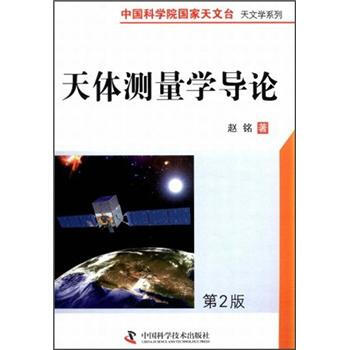
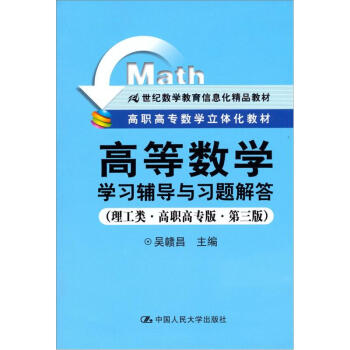

![生物衰老:研究方法與實驗方案 [Biological Aging:Methods and Protocols] pdf epub mobi 電子書 下載](https://pic.tinynews.org/11028004/5398fd0cN3c0d9042.jpg)
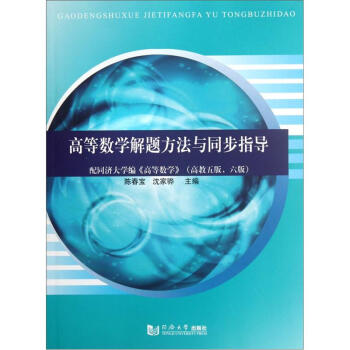

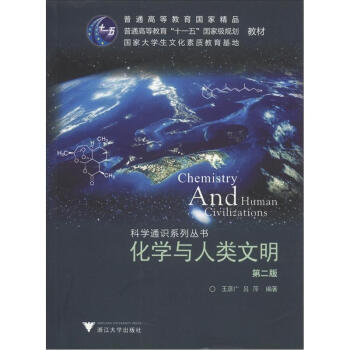
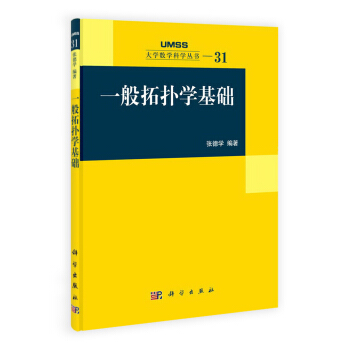
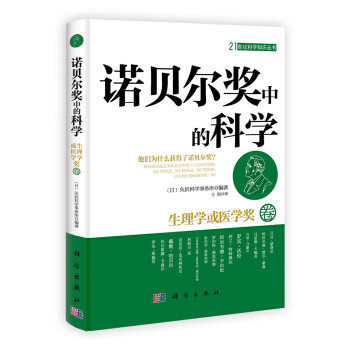

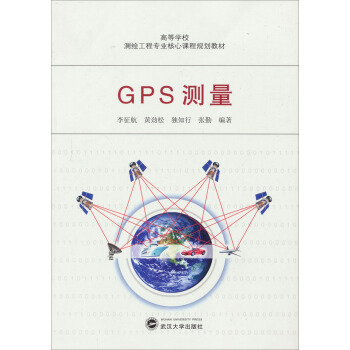

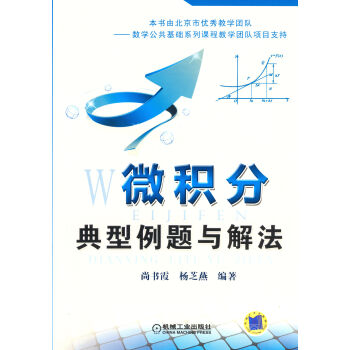


![有機化學(第4版)(下冊)/高等學校教材 [Orgnic Chemistry] pdf epub mobi 電子書 下載](https://pic.tinynews.org/11318855/564150deNb2e3db3f.jpg)
